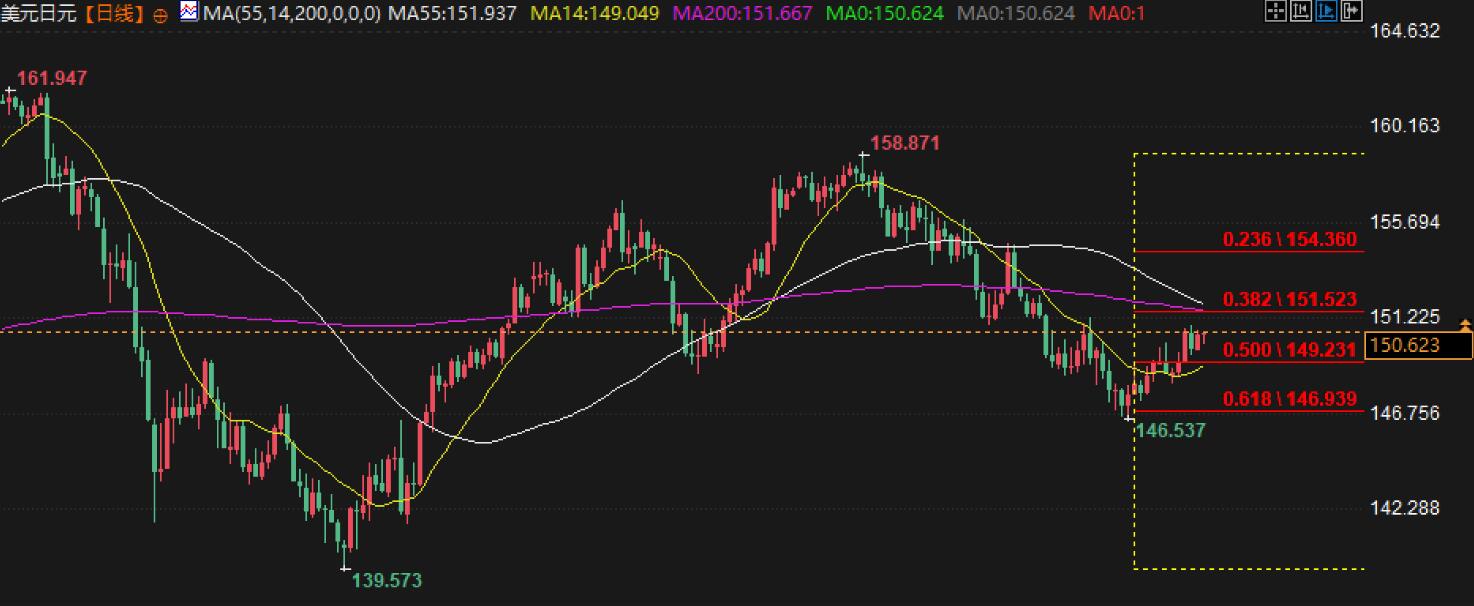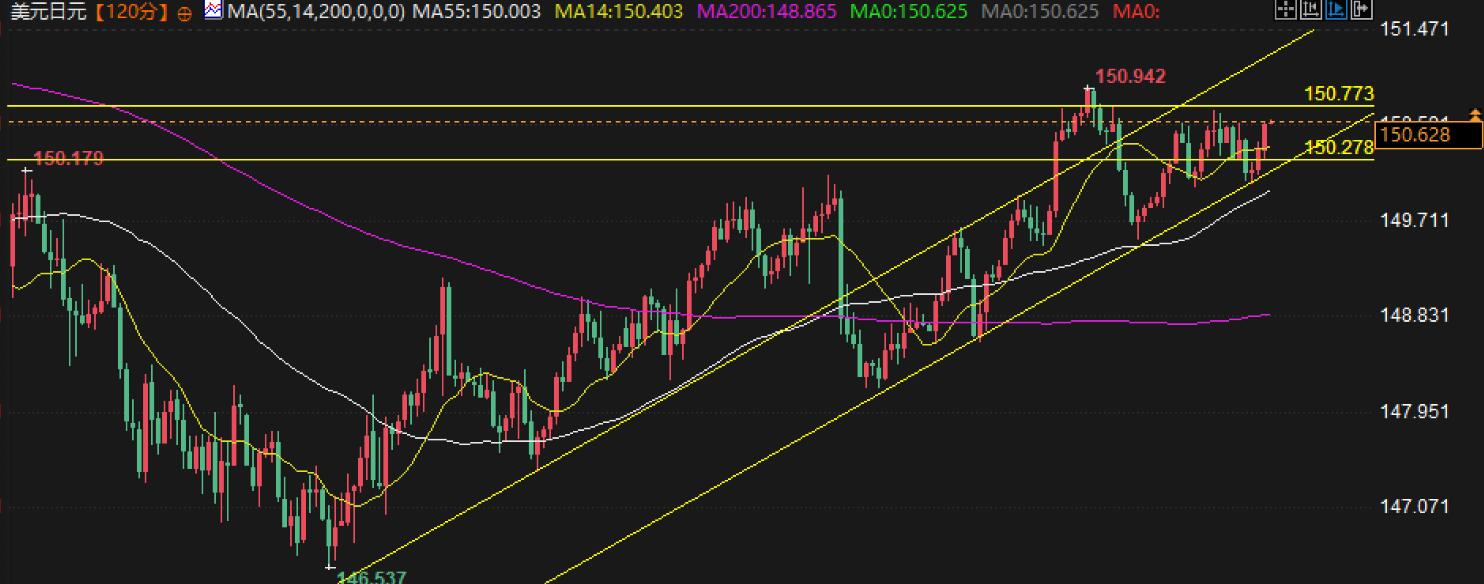Forex Trading Analysis: Is the rebound of USD/JPY expected to accelerate?
On Thursday (March 27th) during the European trading session, the USD/JPY slightly rose and is currently trading around 150.70. Due to a slight rebound in external environmental risk appetite, traditional safe haven assets such as the Japanese yen are under pressure. However, the global economic uncertainty brought about by US President Trump's new round of tariff plans still supports market demand for the Japanese yen to some extent.
At the same time, the Bank of Japan continues its expectation of interest rate hikes, forming a clear policy divergence from the Federal Reserve's signal of two interest rate cuts within the year, which also limits the downward space for the yen. The durable goods order data released by the United States performed better than expected, and although the US dollar index was close to a three week high at one point, it ultimately failed to maintain its strength; The market is waiting for the remaining data of the week, especially the PCE price index on Friday, to evaluate the Fed's subsequent interest rate cut path.
Fundamental analysis
The recent changes in the external environment have led to some fluctuations in risk sentiment. US President Trump announced on Wednesday that he will impose a 25% tariff on all imported cars and foreign auto parts on April 2, and plans to implement new tariff measures on at least 15 economies next week. This move puts pressure on the global economic outlook once again, prompting some markets to maintain their preference for safe haven assets. At the same time, the Bank of Japan is optimistic about the prospects for inflation and wage growth. Several officials emphasized that Japan's inflation is steadily approaching its 2% target and hinted that if wage growth continues to be strong, the Bank of Japan may continue to gradually raise interest rates.
On the other hand, in recent statements, the Federal Reserve has lowered its expectations for economic growth and hinted at the possibility of implementing two 25 basis point interest rate cuts this year. Multiple Fed officials have expressed relative caution: Chicago Fed President Austan Goolsbee said in a media interview that current policies still need to observe more economic data, and the actual timing of interest rate cuts may be longer than expected; But he also stated that US interest rates may "significantly decrease" in the next 12-18 months. Minneapolis Federal Reserve Chairman Neel Kashkari believes that although some progress has been made in the fall of inflation, more time is still needed to ensure that price pressures are under control. St. Louis Fed President Alberto Musalem stated that if the labor market continues to remain strong and the secondary effects of tariffs on prices emerge, the Fed may need to maintain higher interest rates for a longer period of time in the future, and even consider more stringent policies.
The durable goods order data released by the US Department of Commerce on Wednesday showed that the overall monthly rate of durable goods orders in February increased by 0.9%, with the previous value revised up to 3.3%; Excluding core durable goods orders related to transportation, they increased by 0.7%, both better than market expectations. As a result, the US dollar index hit a three week high during the Asian session, but then fell back due to market re evaluation of the prospect of interest rate cuts. The final value of US fourth quarter GDP, initial jobless claims data, and pending home sales data on Thursday may also trigger short-term fluctuations, while Friday's PCE price index is seen as an important indicator for observing the direction of Federal Reserve policy.
Technical analyst interpretation:
On the daily chart, after being blocked near last year's high of 161, the US dollar/Japanese yen showed a significant decline overall, reaching a recent low of 146.537 at one point. Although there is a temporary rebound in the current price, the key resistance to Fibonacci retracement above is located in the 23.6% retracement level of 154.3 and the 38.2% retracement level of 151.5. If the exchange rate continues to rise, attention should be paid to its effectiveness in breaking through the 200 day moving average (MA200 around 151.66). Although the MACD indicator shows some signs of a low golden cross, the main line is still below the zero axis, indicating that the overall downward trend has not been completely reversed. RSI is hovering around 50, indicating that market sentiment is still cautious. If the subsequent volume breaks through the 151.3 line, it is expected to open up upward space. Otherwise, the possibility of retesting the low point of 146.537 cannot be ruled out.
 In the 2-hour chart, the exchange rate has recently shown a volatile upward trend and formed a tilted upward channel, with support below in the range of 150.27-150.50 and resistance above concentrated in the area of 150.77-150.94. From the perspective of MACD, DIFF and DEA interweave near the zero axis, and the change in kinetic energy column is not significant, indicating that the short-term trend momentum is not strong. RSI is around 58, slightly strong, but has not yet entered the overbought range, indicating a relatively balanced long short competition. If the exchange rate can break through the resistance around 150.94 with volume, there is a chance to test around 151.077; If the area cannot be stabilized, it may fall into the short-term consolidation range of 150 to 151.
In the 2-hour chart, the exchange rate has recently shown a volatile upward trend and formed a tilted upward channel, with support below in the range of 150.27-150.50 and resistance above concentrated in the area of 150.77-150.94. From the perspective of MACD, DIFF and DEA interweave near the zero axis, and the change in kinetic energy column is not significant, indicating that the short-term trend momentum is not strong. RSI is around 58, slightly strong, but has not yet entered the overbought range, indicating a relatively balanced long short competition. If the exchange rate can break through the resistance around 150.94 with volume, there is a chance to test around 151.077; If the area cannot be stabilized, it may fall into the short-term consolidation range of 150 to 151.

Future prospects
In the short term, if Trump's tariff news raises doubts about global economic growth, market risk appetite may cool down again, and the yen, as a traditional safe haven asset, is still expected to receive support. Meanwhile, the Bank of Japan's continued expectation of interest rate hikes has also strengthened the medium-term fundamentals of the yen to some extent. But if the US economic data continues to improve and further consolidates the possibility of the Federal Reserve delaying interest rate cuts, the US dollar still has a certain basis for rebound. Under the two game scenario, the US dollar/Japanese yen may engage in a tug of war within the range of 150 to 152.
If we consider from a longer-term perspective, we need to continue to pay attention to the impact of US inflation and employment data on the Federal Reserve's decisions. Once the pace of interest rate cuts by the Federal Reserve is established and the Bank of Japan does gradually raise interest rates, the pattern of policy divergence may reverse, which may provide new upward momentum for the yen. But before that, the exchange rate may still fluctuate repeatedly.
Tips:This page came from Internet, which is not standing for FXCUE opinions of this website.
Statement:Contact us if the content violates the law or your rights
